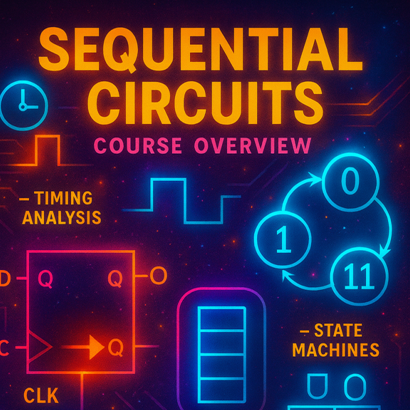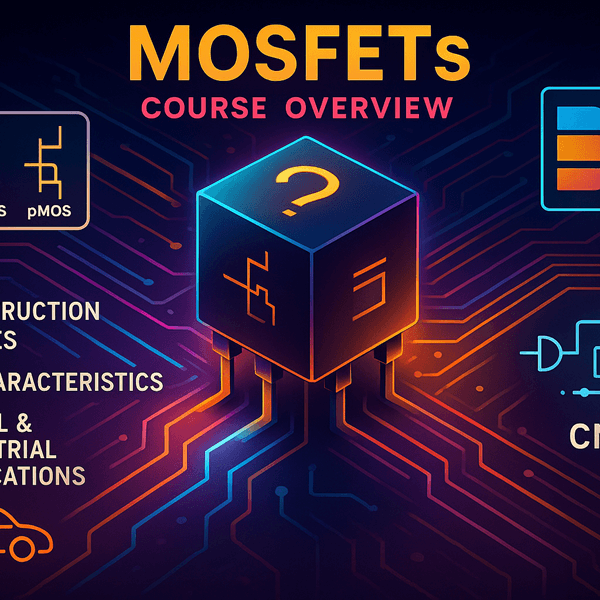Description
This course covers the key concepts and techniques in sequential logic circuit design, which are fundamental to constructing memory elements, registers, counters, and finite state machines in VLSI systems. Learners will explore flip-flops, timing analysis, register design, and synchronous/asynchronous counters. Practical applications and design methodologies are emphasized alongside the ability to apply automated test methods to ensure circuit integrity and functionality. This course is designed to build the prerequisite knowledge essential for more advanced digital design and VLSI system implementation.
➢Learning Outcomes
- Design and analyze digital comparators for equality and magnitude detection.
- Understand and apply various flip-flop types and their characteristic tables.
- Analyze timing requirements, including setup and hold times, and metastability issues.
- Differentiate and apply latches and edge-triggered flip-flops appropriately.
- Implement parallel and serial registers for data storage and buffering.
- Design various shift registers and understand their communication applications.
- Design and optimize asynchronous ripple counters and synchronous counters for high-speed operation.
- Develop finite state machines using Moore and Mealy models with state diagrams and tables.
- Understand and apply sequential circuit design methodologies focusing on hazard and glitch analysis.
➢ Skills You’ll Learn
- Sequential Circuit Design: Mastery of flip-flops, latches, registers, and counters is essential for digital memory and processing.
- Timing Analysis: Competence in setup/hold time analysis, metastability, and synchronous circuit timing constraints.
- Design Flow: Understanding of systematic sequential design methodologies to build reliable digital systems.
- Finite State Machines: Ability to model and implement complex logic using Moore and Mealy machine design principles.
- Problem Solving & Testing: Application of automated test systems and inspection methods to ensure circuit correctness and reliability in VLSI designs.
➢Target Audience
- Beginners and early learners in digital electronics and VLSI design fields.
- Students require foundational knowledge in sequential logic for advanced digital system courses.
- Professionals seeking practical skills in flip-flops, registers, and counters for VLSI implementation.
- Engineers aim to understand synchronous and asynchronous sequential circuit design, along with timing and hazard analysis.
➢Topics Covered in this Course
- Module 11: Digital Comparators – ~50 min
- Module 12: Introduction to Flip-Flops – ~50 min
- Module 13: Timing & Flip-Flop Analysis – ~50 min
- Module 14: Latches vs Flip-Flops – ~50 min
- Module 15: Registers – ~50 min
- Module 16: Shift Registers – ~50 min
- Module 17: Counters I – Ripple Counters – ~50 min
- Module 18: Counters II – Synchronous Counters – ~50 min
- Module 19: State Machines Overview – ~50 min
- Module 20: Sequential Design Flow – ~50 min





Reviews
There are no reviews yet.